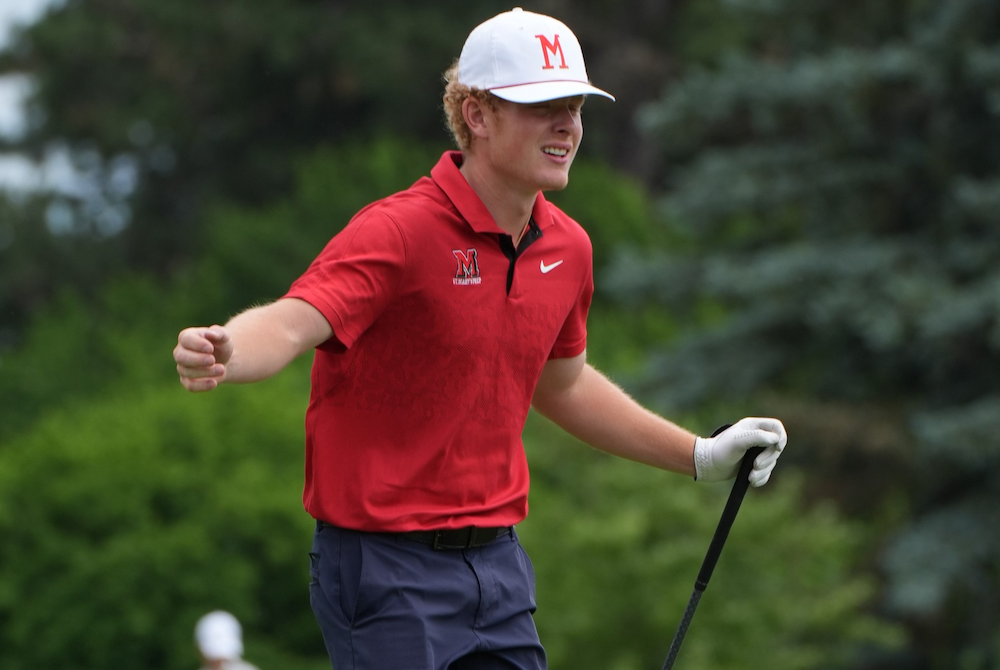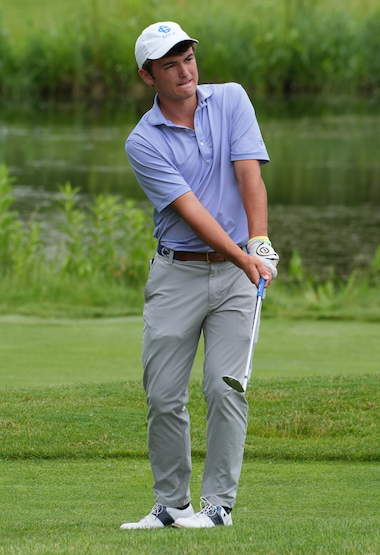
Casting Lines for Future Tournaments
August 12, 2016
By Jack Roberts
MHSAA Executive Director
The MHSAA is best known to the public for the tournaments it conducts to conclude the fall, winter and spring seasons each school year.
These tournaments, the first and largest program of the MHSAA, have survived the Vietnam War, the Korean conflict and two World Wars. They have survived the technology bubble, the housing collapse, the energy crisis and the Great Depression.
MHSAA tournaments existed at the dawn of aviation and at the time of our nation’s lunar landing. Popes, presidents and governors have changed and changed again and again, and MHSAA tournaments roll on year after year.
But the sense of tradition and permanence and inevitability of MHSAA tournaments doesn’t dissuade us from asking questions about our tournaments, even some of the most basic questions. Here are two.
Question #1
I have long been and will always be an advocate for a Ryder Cup format for the MHSAA Golf Finals, and a team tennis approach to the MHSAA Tennis Finals; but 90 years of tradition is hard to overcome. Might this be a more exciting format? Could it be co-ed? Could it reverse the decline in boys tennis participation, and increase girls golf participation? Wouldn’t it be fun to try?
Periodically, the International Olympic Committee requires each of the designated Olympic sports to defend its status, to state its case why the sport should remain a part of the Olympic program. Then, after a series or votes that retain one sport at a time, the IOC drops the sport that makes the weakest case. It does so to make room for one of the previously unlisted sports that makes the best case for inclusion.
This would appear to keep the existing Olympic sports on their toes, and to keep the Olympic movement fresh and reflective of modern trends in sports.
While I would not enjoy the controversy, I can see the potential for some positive results if the MHSAA were to invoke the same policy for determining the 14 tournaments it will provide for girls and the 14 for boys.
This might cause us to consider more deeply what a high school sport should look like, or at least what an MHSAA tournament sport should stand for.
On the one hand, we might be inclined to drop tournaments for those sports that involve mostly non-faculty coaches and non-school venues, or require cooperative programs to generate enough participants to support a team, or resort almost entirely to non-school funding, or cater to individuals more than teams.
Or perhaps this process would cause policymakers to forget traditional thinking and ask: “In this day and age, should we shake off traditional notions of sport and consider more where modern kids are coming from?” That might mean fewer team sports and more individual sports, more “extreme” sports like snowboarding and skateboarding, and more lifetime sports, meaning not just golf and tennis and running sports, but also fishing and even shooting sports.
Currently, MHSAA policy states that the MHSAA will consider sponsorship of a tournament series for any sport which 64 member schools conduct on an interscholastic basis as a result of action by the governing boards of those schools.
Should the only question be how many schools sponsor a sport, or must an activity also have certain qualities and/or avoid certain “defects?” What should an MHSAA tournament sport look like and stand for?
Question #2
Bristling from criticism that his association is a money-grabbing exploiter of children, my counterpart in another state said, “If we were running our programs just to make money, we would do very many things very differently.” I knew exactly what he meant.
Because we care about the health and welfare of students, because we mean what we say that the athletic program needs to maximize the ways it enhances the school experience while minimizing academic conflicts, and because we try to model our claim that no sport is a minor sport when it comes to its potential to teach young people life lessons, we operate our programs in ways that make promoters, marketers and business entrepreneurs laugh, cry or cringe.
If money were the only object, we would seed and select sites to assure the teams that attracted the most spectators had the best chance to advance in our tournaments, regardless of the travel for any team or its fan base. If money were the only object, we would never schedule two tournaments to overlap and compete for public attention, much less tolerate three or four overlapping events. If money were the only object, we would allow signage like NASCAR events and promotions like minor league baseball games.
Those approaches to event sponsorship may not be all wrong; they’re just not all right for us. And we will live with the consequences of our belief system.
During a typical school year, more than 20 percent of the MHSAA’s 2,097 District, Regional and Final tournaments lose money. Not a single site in golf, skiing or tennis makes a single penny. In no sport did every District, Regional and Final site have revenue in excess of direct expenses.
In fact, in only three sports – boys and girls basketball and football – is revenue so much greater than direct expenses overall that it helps to pay for all the other tournaments in which the MHSAA invests.
That’s right: invests. When we present our budget to our board, we talk about the MHSAA’s investment in providing tournament opportunities in all those sports and all those places that cannot sustain the cost of those events on their own. How much is this investment worth to students, schools and society?
These two are core questions that require our focus far in advance of talk about scheduling, site selection, seeding and the myriad matters that too often hijack our time and attention.

Second-Round Surge Lands Orchard Lake St. Mary's 1st Finals Victory
By
Keith Dunlap
Special for MHSAA.com
June 8, 2024
EAST LANSING — Tom Brecht had waited 28 years for this moment, but he could think about only one thing in the immediate aftermath of the Saturday’s Lower Peninsula Division 2 Final at Forest Akers West.
“It’s cold,” Brecht said after getting a bucket of ice water dumped on him by his golfers. “I wish it was 90 about degrees out there; then it would be OK.”
It was the first time Brecht had experienced the traditional celebratory bath, which was fitting because it was also the first time he’d experienced a Finals title since taking over as the head coach of Orchard Lake St. Mary’s in 1996.
An athletic program steeped in tradition across many sports, St. Mary’s will now get to hang a championship banner for boys golf after the Eaglets closed with a strong second day to win their first title.
Trailing by one shot after Friday’s first round, St. Mary’s shot four strokes better as a team on the second day for a final total of 603 (304-299), edging runner-up Grand Rapids Christian by one stroke.
The Eagles had entered in fourth place after shooting a first round score of 307, but shot a 297 on the second day. Richland Gull Lake was third at 609.
All of it obviously left Brecht overjoyed and beaming with warmth in spite of the cold water dripping down his back.
“I thought it would come,” Brecht said of winning a state title. “I don’t know how much longer I’ll be coaching – maybe one or two more years. I’m just very thankful and blessed.”
 Leading the way for St. Mary’s was senior Cooper Eaton, who shot a two-day score of 144 (71-73). Sophomore Blaise Król was next with a 147 (74-73), followed by junior Ethan Mukhtar (78-78-156), sophomore Mikey Karwaski (81-75-156) and senior Ben Carroll (82-82-164).
Leading the way for St. Mary’s was senior Cooper Eaton, who shot a two-day score of 144 (71-73). Sophomore Blaise Król was next with a 147 (74-73), followed by junior Ethan Mukhtar (78-78-156), sophomore Mikey Karwaski (81-75-156) and senior Ben Carroll (82-82-164).
St. Mary’s hadn’t won a tournament going into the weekend, but close calls over the regular season turned into a breakthrough at the most important event of all.
“It’s surreal,” Eaton said. “It’s a dream come true. All the guys put it together, and it was our day. We really took care of business.”
Also taking care of business was Grand Rapids Catholic Central senior Will Preston, who like St. Mary’s broke through for the first time in what was his final high school tournament.
Preston was the individual runner-up at the last two Division 3 Finals and a part of Catholic Central’s 2023 team title.
Moving to Division 2 this year, Catholic Central didn’t qualify as a team, but Preston did individually and made good on another opportunity.
“Obviously being runner-up two years in a row sucks,” Preston said. “But you take that experience and do your best to move and keep it coming.”
After a 2-under round of 70 on the first day, Preston shot a 1-under round of 71 to finish at 141, one shot ahead of Bloomfield Hills Brother Rice junior Leandro Pinili and three shots ahead of Eaton.
The last hole for Preston was the par-4 No. 3 hole, and he knew he was two shots ahead teeing off.
He said it didn’t change his strategy of hitting an iron off of the tee, but he sprayed that shot into the rough and had to chip out.
Preston eventually laid three facing a chip shot near the green, but got up and down from there to secure a bogey and the title.
“I didn’t have my best stuff today, actually,” said Preston, who will play in college for Penn State. “But I was able to keep with it and had a couple of key up-and-downs later in the round. Just kept with it when I was struggling.”
PHOTOS (Top) Orchard Lake St. Mary's Cooper Eaton celebrates after a drive Saturday at Forest Akers West. (Middle) Grand Rapids Catholic Central's Will Preston follows a chip. (Click for more from High School Sports Scene.)

